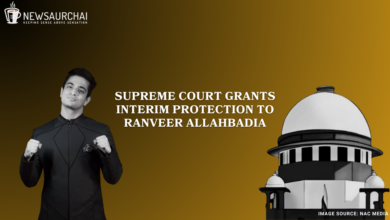Kapil Sharma, Endless Controversies And Low TRPs

On March 25th, Kapil Sharma made a comeback on the small screen with a game show, Family Time with Kapil Sharma. Following seven months long hiatus after ‘The Kapil Sharma Show’ and failed film ‘Firangi’, the comedian-turned-actor aimed at making a grand comeback as the comedy king of the telly world. While his fans rejoiced funnyman’s return to the small screen, they were not too appreciative of the new show’s concept. The reports of Kapil canceling the shoots of the show have been doing the rounds for quite a while now. After a no-show over a weekend, sources have confirmed that ‘Family Time with Kapil Sharma’ has been pulled off the air for the entire month of April.
Let’s face it, the man who once used to bring a smile on our faces has suddenly become a controversial figure. Ace comedian, who has the gift of gab is presently under the scanner for using foul language against the SpotboyE editor, Vickey Lalwani. Kapil is reportedly suffering from depression and is unable to cope with his downfall. His future seems to be more troublesome now; especially after he has been caught in a web of controversies once again. Some suggest that it all started with his mid-air scuffle with Sunil Grover. Despite various attempts and trials at patching up, the two could not bury the hatchet; which eventually led to not just Sunil’s exit from the show, but also other comedians like Ali Asgar leaving the show to join rival Krushna Abhishek for new shows and programs.
The show could not gain the same ratings despite making several changes in the concept. The comedian could not garner a positive response in terms o TRPs. The every now and then controversies and mishaps that followed made the situation even worse. Be it the aggressive attitude towards the trolls the audience in general, or the recent lawsuit filed by him against his ex-managers the Simoes sisters; all of this reflect undoubtedly that Kapil clearly could not handle his downs as gracefully as he tasted success. Kapil has worked with Preeti and Neeti Simoes for more than seven years. They have been a crucial part of his successful journey of ‘Comedy Nights with Kapil’ and ‘The Kapil Sharma Show’. But their end of association also dates back to Sunil’s exit from the team.
A few well-wishers are still trying to seek forgiveness on behalf of Kapil Sharma including his former colleagues like Bharati Singh, Shilpa Shinde, Kiku Sharda and Krushna Abhishek who have come forward to request media and people to give him his space for a while. Even Neeti Simoes has put out a heartfelt open letter to the actor which proves that the two sisters may not be working with him anymore but are still concerned about his health.
When asked about Kapil’s recent Twitter attack on a journalist and if he is depressed, Sunil told a Youtube Channel POP Bollywood that he feels Kapil should take care of his health and likewise his family members and friends should also help him cope up through this phase. He further added, ‘Get back soon’.
Although his comeback show did not flag off as expected, all his fans hope that the comedian would manage to strike back again. Let us just hope that no matter how hard these controversies try to pull him down, Kapil Sharma will pull himself up and entertain us like never before.





